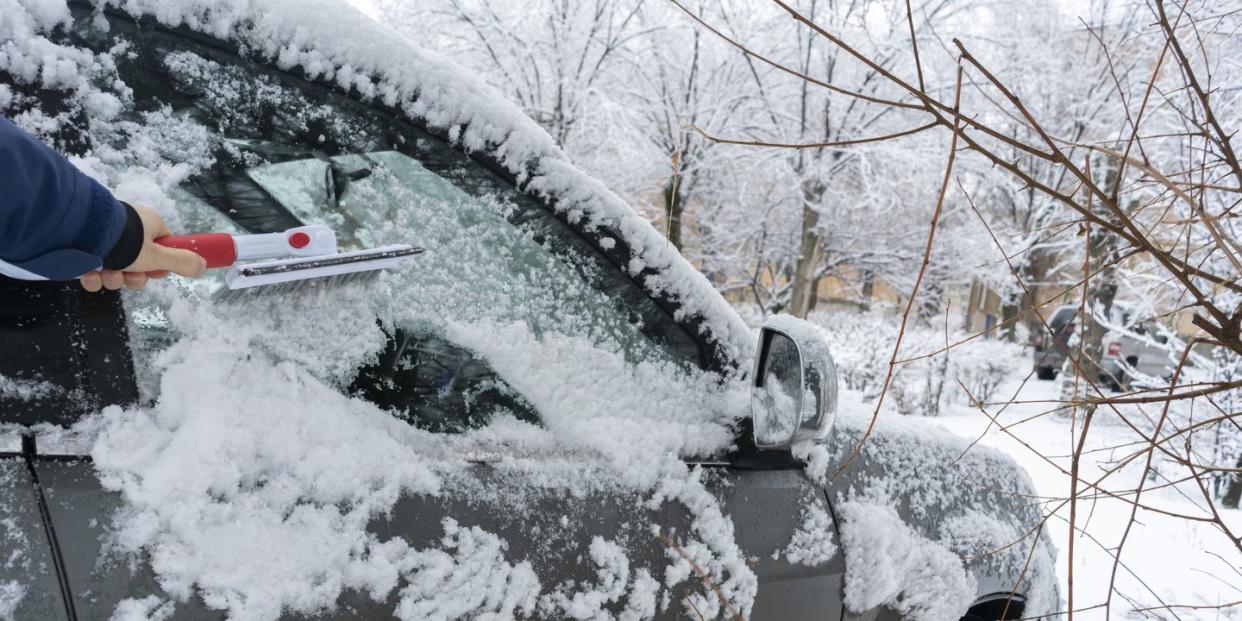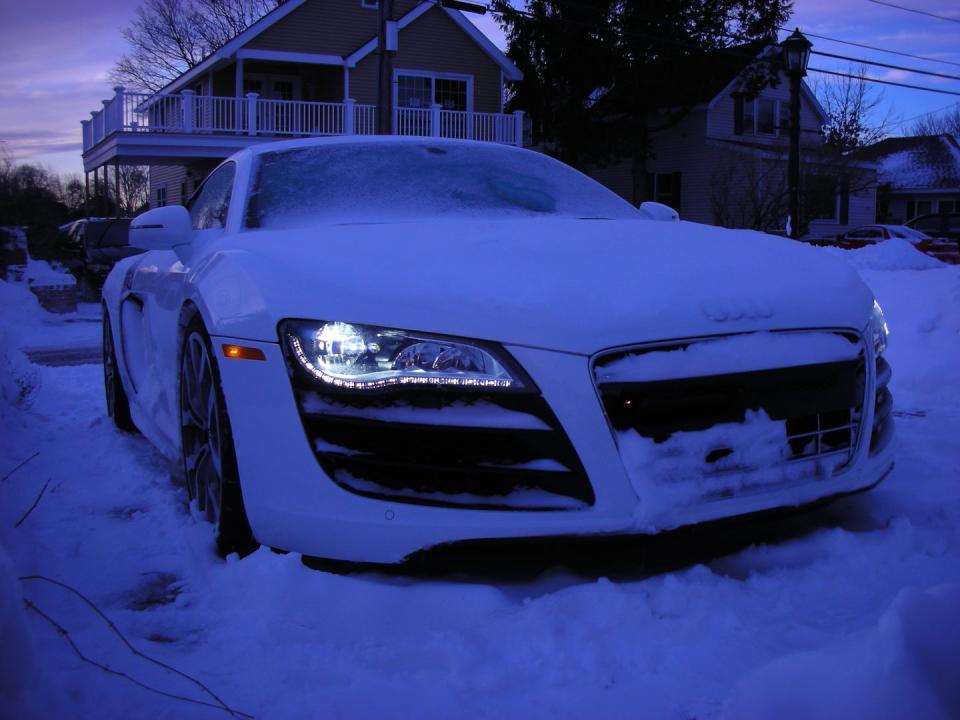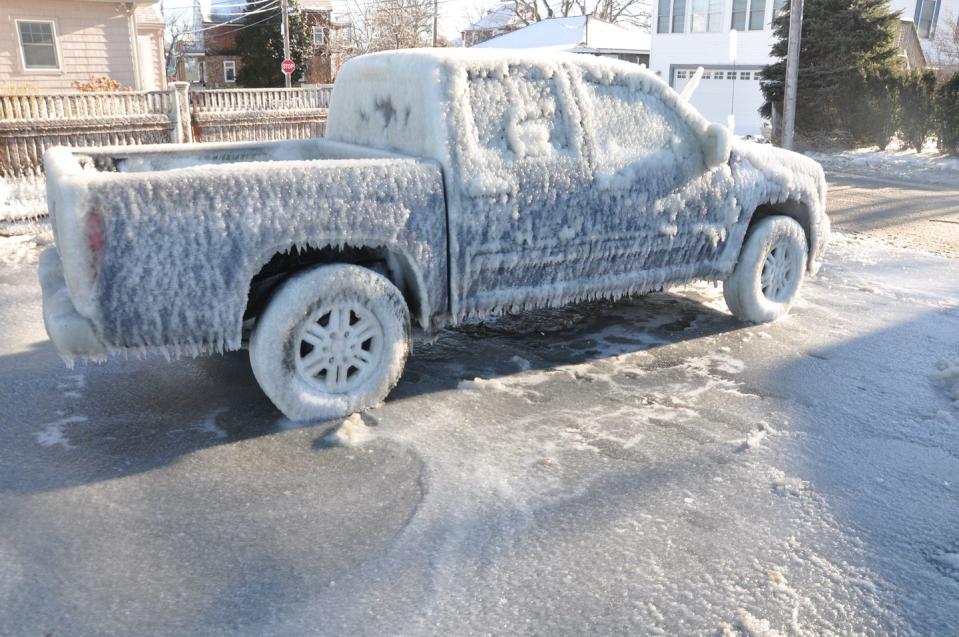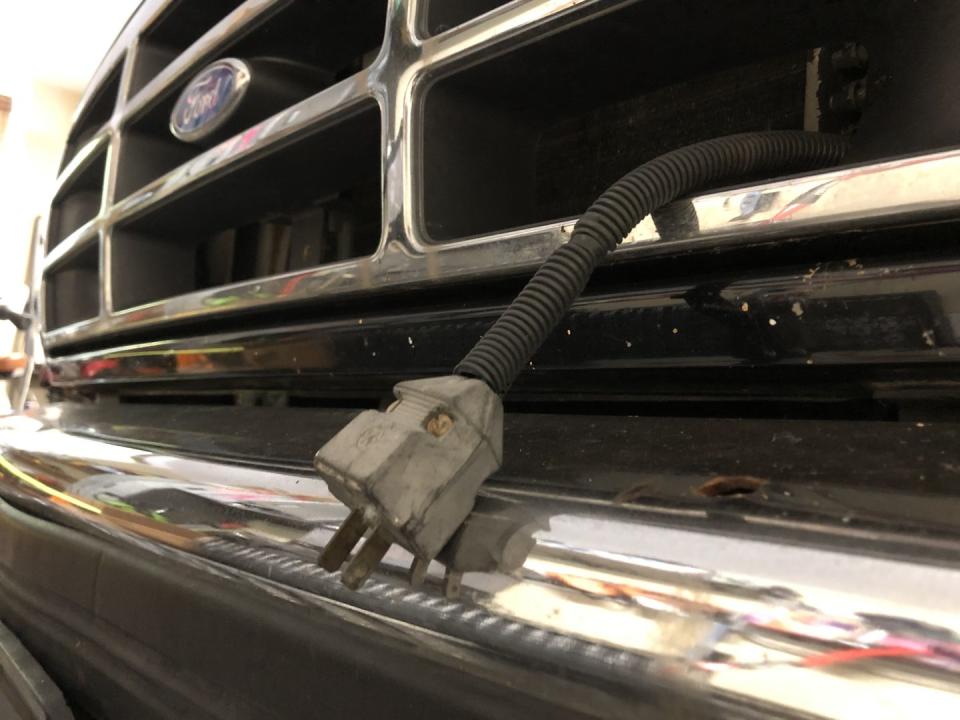No, You Probably Don't Need to Warm Up Your Car Before Driving It

In the thick of winter, common wisdom advises that you step outside, start up your car’s engine, and let it idle to warm up before leaving in cold weather. Contrary to popular belief, this does not actually prolong the life of your engine. In fact, it decreases it by stripping oil away from the engine’s cylinders and pistons.
➡ You love badass cars. So do we. Let's nerd out over them together.
Warming up your car before driving is a leftover practice from a time when carbureted engines dominated the roads. Carburetors mix gasoline and air to vaporize fuel to run an engine, but they don’t have sensors that tweak the amount of fuel when it’s cold. Instead, they use a mechanical system called a choke to temporarily restrict the air intake and run a richer mixture.
This is a crude way to adjust the air-fuel ratio, and anyone with a carbureted engine can attest that it’s hard to drive under load when the carb is choked. It’s easy to stray too rich on the mixture and foul your spark plugs. Because of this, you need to let older cars warm up before driving or they will stall out, but carbureted engines were on their way out by the 1980s. Modern cars use sensors to adjust fuel consumption, and idling simply doesn’t warm the engine enough for those sensors to respond.
How Idling Beats Up a Modern Engine
An internal combustion engine works by using pistons to compress a mixture of air and vaporized fuel within a cylinder. The compressed mixture then ignites to create a combustion event—as in, a little controlled explosion that powers the engine.
When your engine is cold, gasoline is less likely to evaporate and create the correct ratio of air and vaporized fuel for combustion. Engines with electronic fuel injection have sensors that compensate for the cold by pumping more gasoline into the mixture. The engine continues to run rich in this way until it heats up to about 40 degrees Fahrenheit.
“That’s a problem because you’re actually putting extra fuel into the combustion chamber to make it burn and some of it can get onto the cylinder walls,” Stephen Ciatti, a mechanical engineer who specializes in combustion engines at the Argonne National Laboratory, told Business Insider. “Gasoline is an outstanding solvent and it can actually wash oil off the walls if you run it in those cold idle conditions for an extended period of time.”
You’re not off the hook if your vehicle runs on diesel, either. As the World Health Organization notes, diesel is sometimes used as a solvent to clean engines, tanks, and refinery equipment. As with gasoline, you don’t want to pump in too much of it for so long that it starts cleaning the inside of your engine.
The life of components like piston rings and cylinder liners can be significantly reduced by fuel washing away the lubricating oil, which happens with the extra fuel used while the engine runs rich. Less oil means more friction, which can wear out and eventually destroy vital components of your car’s engine.
Keep That Cold Air Clean
If you’re not convinced yet, there’s another major reason why you shouldn’t warm up your modern car by idling for very long in the winter: the environment.
Remember that worse fuel economy we mentioned earlier from the engine running richer while it idles? It’s enough to tip some cars into true gas-guzzler territory. According to the Washington Post, National Resources Canada ran an experiment where they idled modern, non-carbureted cars before setting off at -18 degrees Celsius, which is just under 0 degrees F. Cars that idled for five minutes had 7% to 14% worse fuel economy than their no-idling counterparts, while cars that idled for ten minutes fared 12% to 19% worse.
Worse yet, idling is a significant source of greenhouse gas emissions and particulate matter in the air. Researchers with the U.S. Department of Energy estimate that not only does personal vehicle idling waste 3 billion extra gallons of fuel, but it also releases 30 million tons of carbon dioxide into the air. That figure includes idling elsewhere as well, such as in drive-thru lines and stop-and-go traffic, but it demonstrates the magnitude of the idling scourge. Don’t idle longer than you need to, be it in a school drop-off zone or in your driveway on frozen mornings.
Perhaps one idling car sounds like a relatively minor drop in the bucket within the bigger picture, but as with a rainstorm, those drops add up, especially since needing to warm up your car is such a common misconception. Winter is especially bad for air pollution as cold air is denser than warm air and can hold smog closer to the ground where it doesn’t disperse as easily, according to Accuweather. Besides, not idling your modern car isn’t just a selfless act to use fewer natural resources and befoul the air less—it also saves you money on fuel and repairs in the long run.
How to Safely Set Off In Freezing Temps

Driving your car is the fastest way to warm the engine up to 40 degrees so it switches back to a normal air to fuel ratio. Even though idling sends warm air generated by the heater core into the cabin after a few minutes, idling does surprisingly little to warm the actual engine.
We asked Volvo, which conducts cold-weather testing in the Arctic, whether their new cars need any sort of warmup, and the answer was an ever-so-slightly qualified no. “It’s best to just give the engine a few seconds to build oil pressure before driving normally,” a Volvo spokesperson explained. “Good oil quality and condition are crucial for protecting the engine in cold start conditions.”
The best thing to do is start the car, take a minute to knock the ice off your windows, and get going. The obvious caveat here is that if it’s below freezing, you need to make sure your defroster is working before you leave your driveway. Don’t be the person peering through a porthole in your ice-covered windshield. Some cars, like certain Land Rovers, can expedite this process with electric heating elements in the glass.
However, hopping into your car and immediately gunning it will put unnecessary strain on your engine. It takes five to fifteen minutes for your engine to warm up while driving, so take it nice and easy for the first part of your drive. Performance cars often enforce this for you with a graduated rev limiter that doesn’t allow you to use the car’s full RPM range until the engine is up to temperature.

The Engine Block Heater
If only there were a way to get your car’s fluids up to temperature—and get the heater and defroster going—before actually starting your engine. Well, there is: an engine block heater. Block heaters use an electrical element to preheat your engine’s fluids so your car is ready to go and easier to start when temperatures drop. Block heaters are why your neighbor’s definitely-not-hybrid Ford F-250 may have a three-prong plug poking out of its grille. They’re a common option on trucks, with Chevy charging only $100 for a block heater on a new Colorado.

Block heaters can also be retrofitted to just about any vehicle. Aftermarket block heaters are inexpensive, and can be well worth the money when you consider the more pleasant mornings and reduced wear that they deliver.
So, unless you’re rolling in a 1970s Chevelle—which we assume isn't your daily driver—bundle up, scrape off your car, and get moving.
You Might Also Like

